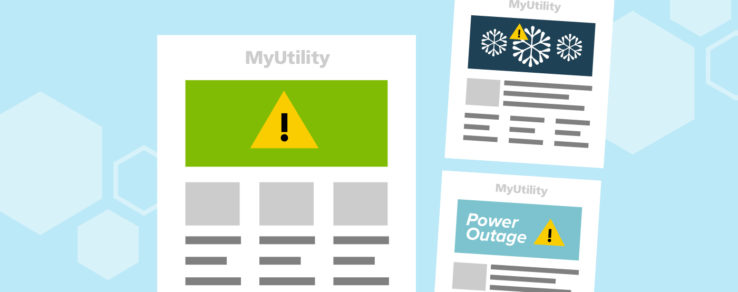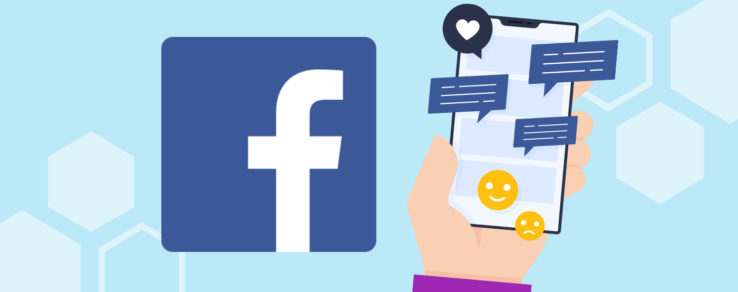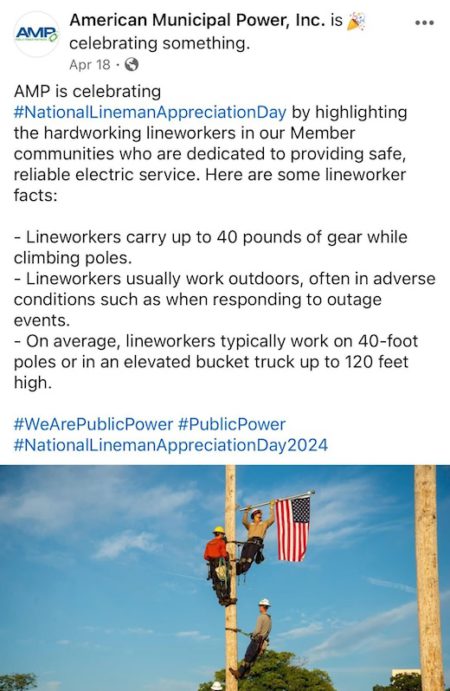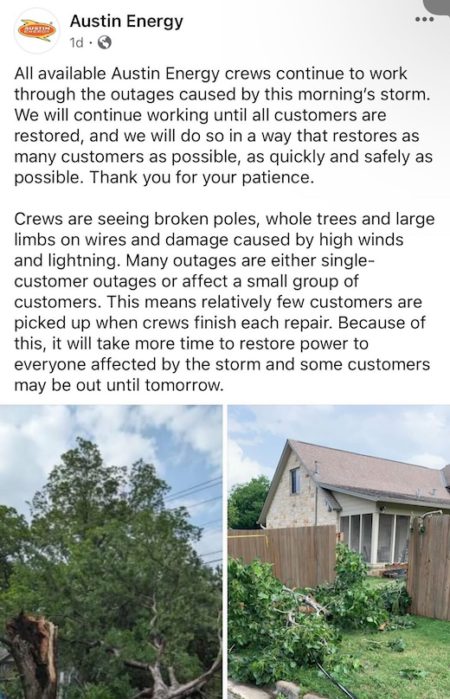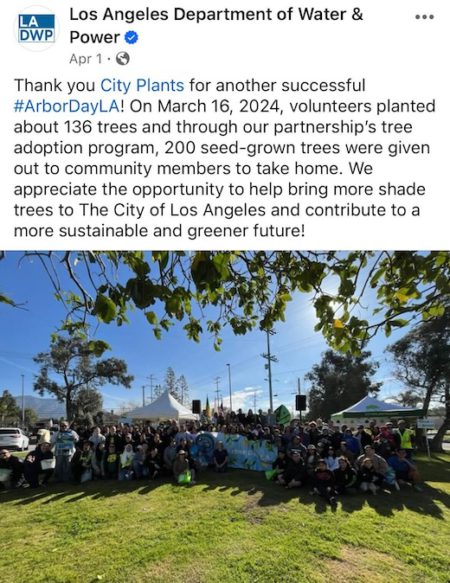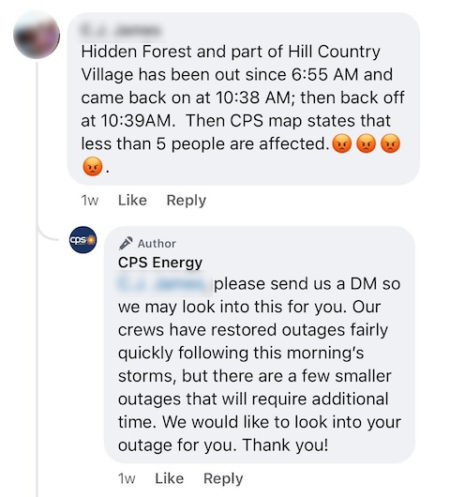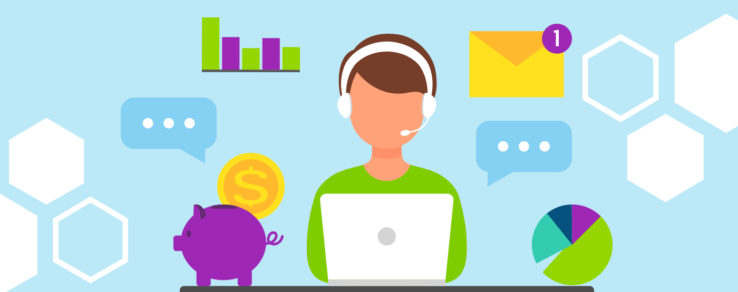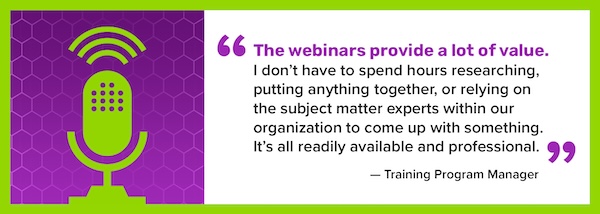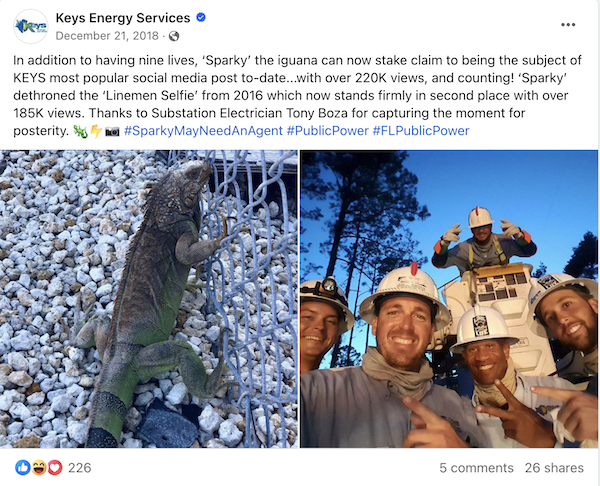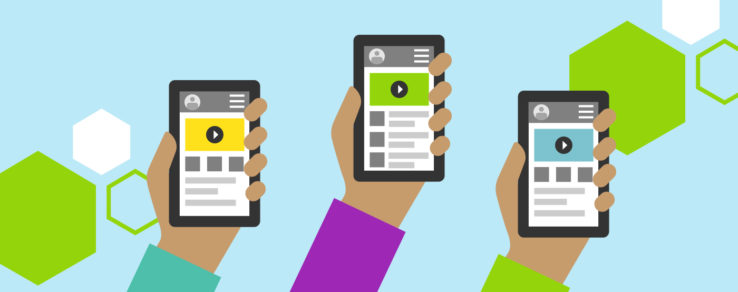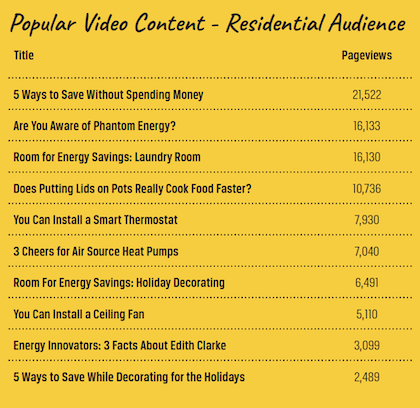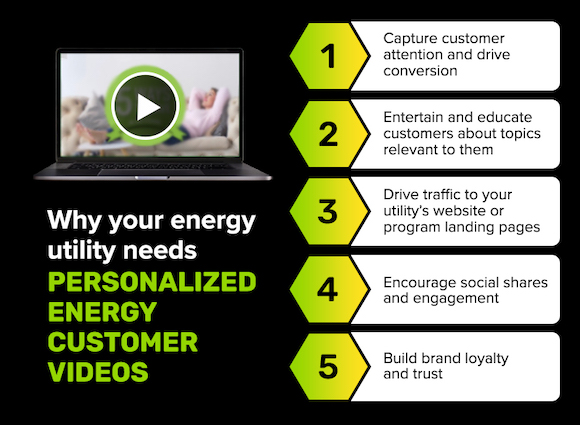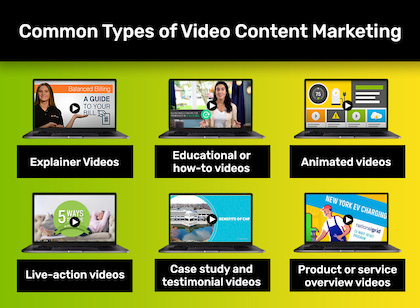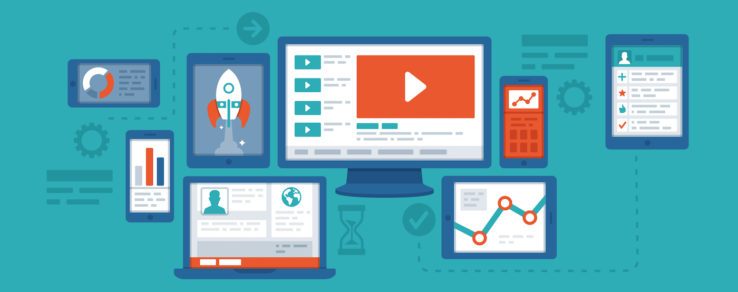A crisis for a utility isn’t a matter of if, but when. Some emergencies arrive with warning signs, while others strike without notice — severe weather events to power outages and water main breaks. As an essential service provider, you carry a dual responsibility: restoring critical infrastructure and keeping your customers informed every step of the way. This crucial role requires a carefully crafted utility crisis communications plan built on proactive preparation and transparent engagement.
Why Do You Need a Utility Crisis Communications Plan?
Today’s customers expect instant updates and seamless digital experiences. They’ve grown accustomed to the “Amazon experience” — real-time engagement, transparent communication and immediate response to their concerns. This expectation doesn’t change during a crisis for utilities; if anything, it intensifies.
Recent studies have shown that utility crisis communication significantly impacts customer satisfaction and engagement. Utilities that communicate effectively during outages and other emergencies score notably higher in customer satisfaction metrics than those that fall short.
The key to success lies in proactive planning. When emergency situations arise, there’s no time to develop communication strategies from scratch. Having a well-thought-out plan ensures your utility can respond quickly, consistently and effectively when every minute counts.
Crafting a Comprehensive Utility Crisis Communications Plan
Creating an effective utility crisis communications plan requires careful consideration of multiple factors and scenarios. Here’s where to start:
Identify Potential Emergencies
Every utility faces unique risks. Start by categorizing potential emergencies specific to your operations, such as hurricanes, power outages, grid overload or water main breaks. Understanding these potential scenarios allows you to develop targeted response strategies for each type of crisis. For example, a utility in Tampa, Florida, will have different priorities than one in Anchorage, Alaska.
Prepare Effective Messaging
Develop pre-approved message templates for various scenarios. These templates should be easily customizable to address specific situations while maintaining consistent messaging across all channels, like your website, text, email and social media. Additionally, establish protocols for who can approve and distribute communications during a crisis.
Regular staff training ensures everyone understands their role in utility crisis communication. This training should include customer service representatives, social media managers, PR/media relations employees and leadership teams who may need to speak with the media or stakeholders.
Build Trust in Advance
Crisis management begins long before an emergency occurs. Building strong relationships with customers, community leaders and stakeholders during normal operations lays a foundation of trust that proves invaluable during difficult times. Content marketing plays a crucial role in this trust-building process through strategic storytelling across blogs, infographics, videos, social media, email newsletters and webinars — all designed to educate, inform and empower customers.
For example, Oncor used this Facebook post to showcase the hard work and dedication of its teams. The post highlights linemen working in sub-freezing temperatures, demonstrating its commitment to serving customers, even under challenging conditions.
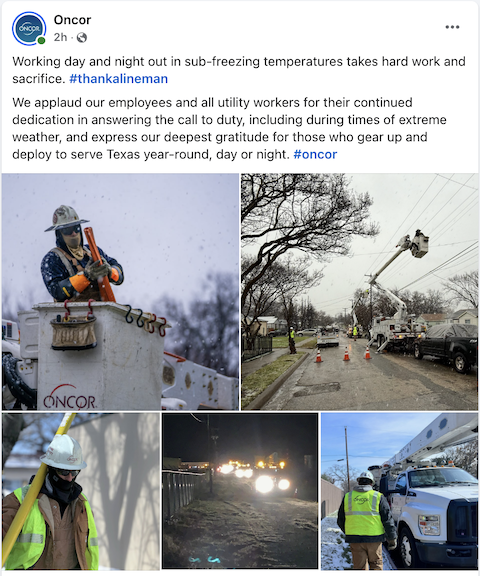
As another example, WSSC Water provided an inside look into its processes by sharing this step-by-step infographic that explains how water main breaks are addressed, from reporting the issue to completing repairs. Offering clear information and setting realistic expectations reassures customers that their concerns are a priority and that workers are prepared to resolve issues quickly.
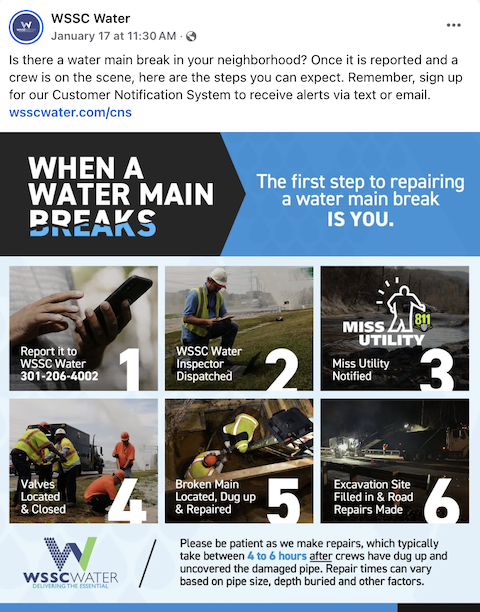
Posts like these educate the public and foster a sense of partnership and transparency long before a crisis arises.
Best Practices for Utility Crisis Communications
When implementing your crisis communications plan, following these best practices can ensure effectiveness.
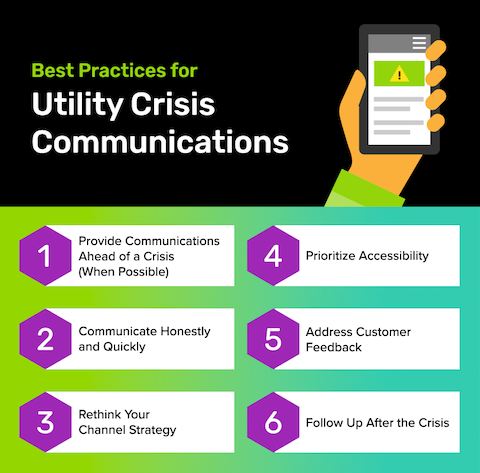
Provide Communications Ahead of a Crisis (When Possible)
When weather forecasts or other indicators suggest the potential for service disruptions, proactive communication helps customers prepare and demonstrates your utility’s readiness. Encourage customers to sign up for outage text alerts or app notifications and share resources like:
- Storm preparation checklists
- Safety tips
- Your outage map
- Your mobile app
- Updates about severe weather forecasts
- How to report an emergency
Duquesne Light Company (DLC) created a Facebook post ahead of dangerously cold temperatures, noting that while widespread outages weren’t expected, DLC would increase staffing and monitor the forecast in preparation. It also provided tips for staying informed and conserving electricity and shared a link to its outage map and details about warming centers.
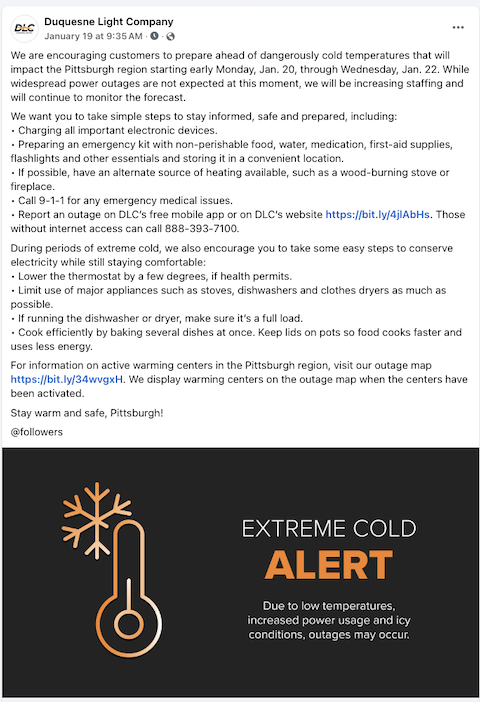
You can also prepare customers for severe weather and potential outages ahead of storm season. Questline Digital has ready-to-use email templates for outage communications to send during the off-seasons.
Communicate Honestly and Quickly
Transparency builds trust. Share accurate and timely information as it becomes available — don’t wait for a specific time, like the top of the hour. Establish a schedule for updates, but also prioritize urgency when new details emerge. Customers value honesty, even when the news isn’t ideal. Be upfront about the scope of the issue, the challenges your team is facing and the realistic timeline for resolution. This level of transparency helps manage expectations and demonstrates accountability.
For example, if a major power outage affects your service area, let customers know the estimated number of impacted households, what caused the outage and the expected restoration timeline. If you don’t have all the answers immediately, acknowledge this and commit to providing updates as soon as possible. Avoid speculation and focus on facts.
Questline Digital can assist utilities in maintaining transparency and timeliness through its Engage platform. This comprehensive solution enables the rapid deployment of communications across multiple channels, ensuring that critical updates reach customers promptly and consistently. Questline Digital also has crisis email templates for before, during and after emergencies or outages.
Ensure the Right Tone
The tone of your communication matters as much as the content. Aim for a clear, honest, humble and apologetic tone. Avoid sounding defensive or dismissive, which can erode trust and escalate frustration. Acknowledge customer concerns with sincerity and empathy while taking responsibility where appropriate.
Rethink Your Channel Strategy
Modern utility crisis communication requires a multichannel approach. Your message should reach customers wherever they are, whether through email, social media, text alerts or your website. Different channels resonate with different audiences, so a diverse strategy increases your ability to connect effectively.
Michigan’s Consumers Energy exemplifies the importance of a comprehensive channel strategy. During a 2019 polar vortex, the utility had a fire at its largest gas compressor station, disrupting natural gas delivery to two-thirds of its customers for two days in the frigid cold. It immediately executed a multichannel crisis communication strategy that included:
- Partnering with the governor’s office to deploy emergency text alerts and TV banner messages
- Hosting Facebook Live events featuring the CEO and SVP of Operations
- Conducting a statewide press conference
- Deploying community affairs teams for door-to-door communications with residents
The results speak volumes about the power of a well-executed utility crisis communication plan: Despite the severity of the incident, Consumers Energy earned the No. 1 ranking in customer satisfaction from J.D. Power in the Midwest Region that same year.
Prioritize Accessibility
Inclusivity is a critical aspect of utility crisis communication. Ensure your messaging is accessible to all customers, including those with disabilities or language barriers. Solutions like Questline Digital’s Engage Global Translate simplify this process by offering instant language translations for webpage content and email messages. With support for 134 languages, customers can select and save their preferred language at the click of a button, fostering a more inclusive engagement experience.
Address Customer Feedback
Monitor social media channels and customer feedback closely during crises. Respond promptly to questions and concerns, even if just to acknowledge that you’re investigating an issue. Timely interaction demonstrates active engagement and concern for customer needs while preventing small frustrations from snowballing into larger issues.
Follow Up After the Crisis
Once the immediate crisis has passed, maintain communication with affected customers. Share specifics about how many people were impacted and how quickly service was restored. Offer resources for recovery and demonstrate your commitment to continuous improvement. You can also remind customers how to sign up for outage alerts and access the outage map and mobile app, helping them prepare for future emergencies.
Kentucky Power provides an excellent example of comprehensive final crisis updates. Its Winter Storm Blair restoration summary included detailed statistics on the impact (10,735 customers without power), specific repair information (27 crossarms, 33 poles and 401 spans of wire replaced) and clear completion timelines. Beyond sharing numbers, the utility also provided practical resources for ongoing customer support, including cold weather energy usage education, contact details and mobile app information for future outage monitoring.
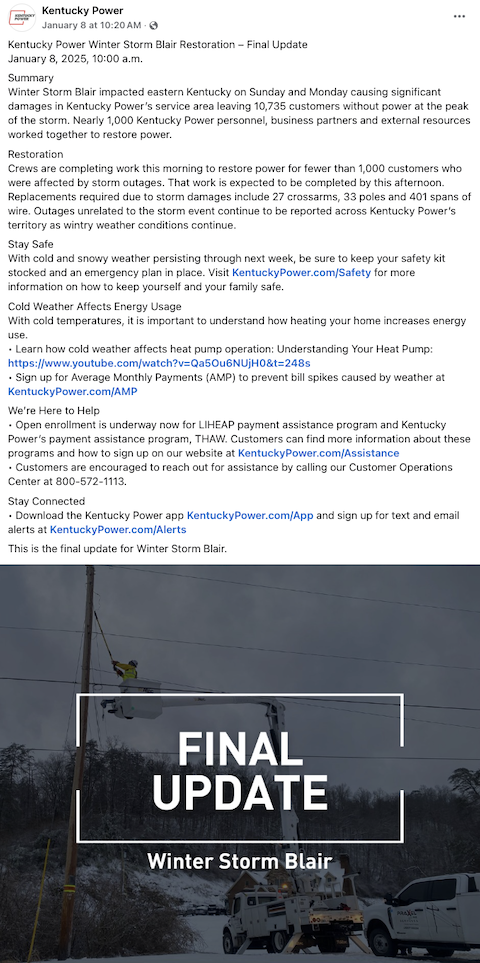
Building Trust Through Effective Communications
A well-crafted utility crisis communications plan can demonstrate your utility’s commitment to customer service and community welfare. By focusing on proactive engagement, clear messaging and customer empathy, you can maintain trust even during challenging times.
Don’t wait for the next crisis to begin preparing. Start evaluating and strengthening your communication strategy today. Your customers — and your utility’s reputation — will thank you for it.
